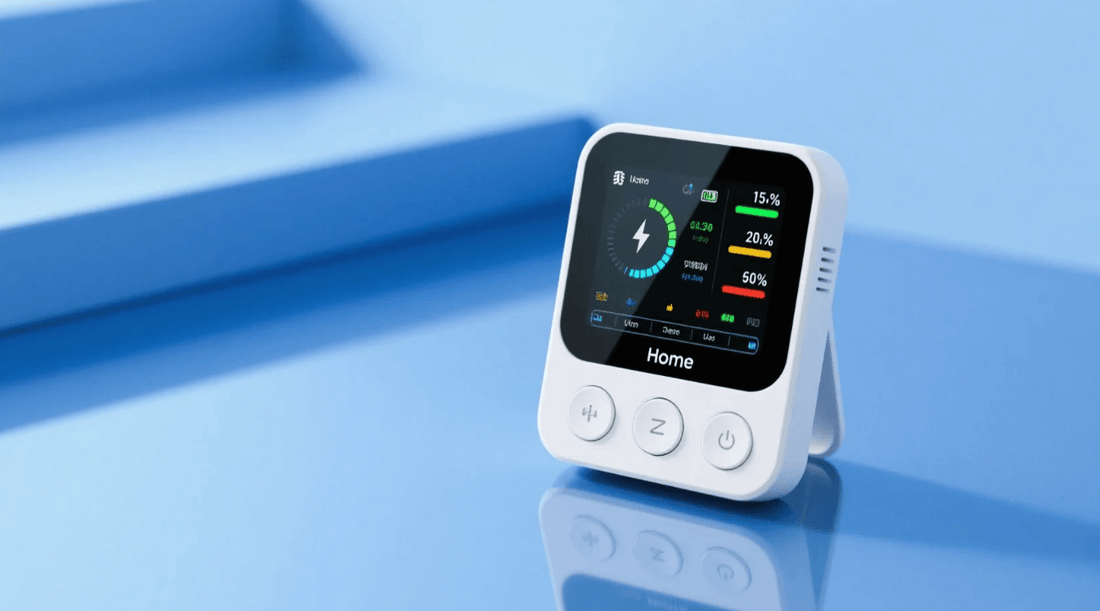
What Is Smart Energy Monitoring System? A Guide for Smart Homes
Share
In today's digital age, homeowners desire control and clarity over their electricity usage. A smart energy monitoring system enables real-time visibility, helping you track, manage, and optimize household energy in a simple, intuitive way. In this in-depth guide, you'll learn what an energy monitoring system is, how it works, why it matters, and how it can be integrated into your smart home setup.
What Is an Energy Monitoring System
An energy monitoring system combines hardware and software to collect, analyze, and present energy usage data. This appliance-level intelligence helps users make informed decisions on consumption and savings. According to Enel X, such systems “provide users with data about their consumption patterns so they can make informed energy management decisions and maximize savings”.
Key Components & Monitoring Principles
An effective energy monitoring system typically includes:
Sensors (direct or non-intrusive) that measure current and voltage.
Gateway or controller that processes sensor signals.
Analytics software that employs machine learning to interpret usage patterns.
User interface (app or browser-based) presenting data clearly.
Nonintrusive load monitoring (NILM) is a widely used approach—it analyzes aggregated voltage and current signals to identify individual appliances, avoiding the need for multiple sensors.

How the System Works in Smart Homes
Data Collection & Real-Time Analytics
First, sensors capture electrical data at either circuit-level or main-feed. This data is transmitted to software that uses algorithms to disaggregate loads. As NILM explains, each device has a unique “signature,” letting the system detect a fridge, dumb TV, or HVAC.
Automation & Integrated Control
Smart energy monitoring systems integrate with thermostats, smart plugs, EV chargers, and lighting controls. ENERGY STAR notes that smart home energy management systems can schedule, suggest, and automate device behavior based on energy patterns. For example, the system may turn off idle devices or charge your EV when rates are lowest.
Key Benefits of an Energy Monitoring System
Real-Time Insight & Cost Savings
With accurate, appliance-level visibility, homeowners can reduce phantom loads and shift usage to off-peak hours, potentially saving 10–20% on bills.
Efficiency & Sustainability
Monitoring reveals inefficiencies or faulty equipment. According to Hark Systems, energy monitoring “helps to control and conserve energy” by revealing unnecessary waste.
Smarter Home Automation
By linking with thermostats, shades, and smart plugs, the energy monitoring system becomes the command hub—coordinating devices to improve comfort and efficiency.
How to Install and Integrate in Your Smart Home
Installation Checklist
Choose system type: Circuit-level or NILM.
Mount sensors and/or clamps in your electrical panel.
Install gateway with Wi‑Fi or wired network.
Set up software and connect devices.
Train the system: Let it learn usage patterns over days or weeks.
Compatibility & Standards
Ensure compliance with UL, ETL, or ENERGY STAR. Verify your system supports Wi‑Fi, Zigbee, or Z-Wave, depending on your smart home platform .
Privacy & Security Considerations
Smart energy monitoring systems may reveal household habits through load signatures. NILM can detect when someone is home or even what device is playing. Always choose systems with encryption, secure cloud storage, and control over data sharing.
The Future: Trends & Innovations
AI-powered NILM with deep learning improves accuracy.
Integration with solar and storage systems (HEMS) enables self‑consumption optimization.
Community-level EMS are emerging to coordinate neighborhoods and microgrids.
Conclusion
A smart energy monitoring system empowers homeowners with data-driven control over their electricity usage. By integrating measurement, analysis, and automation, these systems not only reduce costs but also advance sustainability and convenience. If you're building a modern smart home, adopting this technology is both practical and forward-thinking.
FAQ
Q1: How long does it take to recognize appliances?
A: It generally takes a few days to weeks as the system learns patterns.
Q2: Can I use it with solar panels or batteries?
A: Yes—many systems support solar and storage for optimized self‑consumption.
Q3: Is it easy to install?
A: Circuit‑based systems are DIY‑friendly; NILM may need electrician support.
Q4: Does it cost extra beyond hardware?
A: Basic monitoring requires no subscription; advanced analytics or cloud storage may have fees.
Q5: Is my usage data secure?
A: Choose systems with strong encryption and clear data privacy policies to protect personal information.